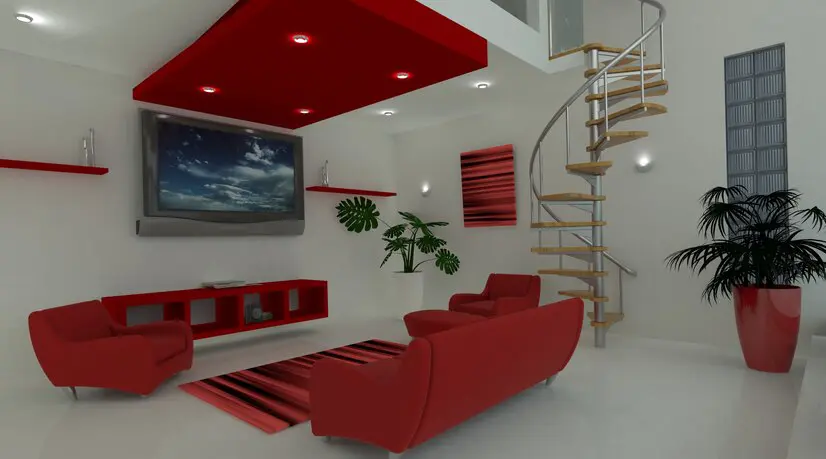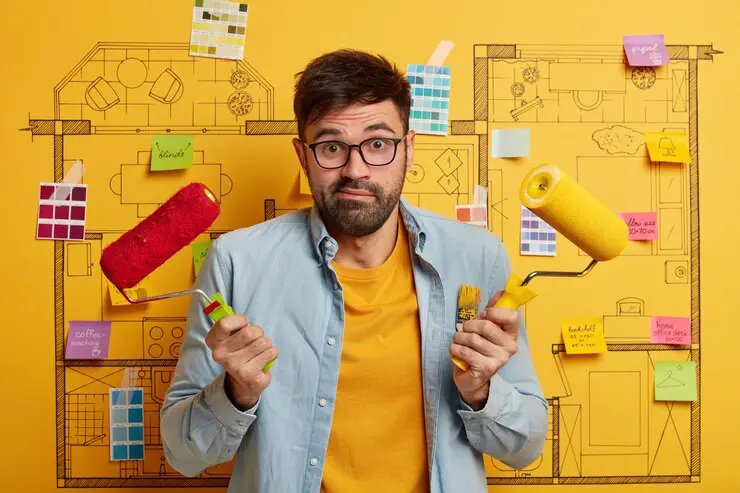Have you ever wondered how your home reaches its fullest potential? It’s a labor of love that requires an expert hand when planning and designing. From finding the perfect furniture to aligning colors and fabrics, interior designers bring out the essential elements of style, personality, and sophistication that make any space inviting. As creative wizards in home design, these professionals are key players in bringing together all aspects of form and function to create stunning masterpieces inside and outside homes and businesses. Learn more about this multi-faceted career with our exploration below into what it takes to become an interior designer, their roles within the industry, and tips for choosing the right one to make your vision come alive.
What is Interior Design?
Interior design is an art form that seeks to craft the perfect balance between beauty and functionality. An interior designer looks to enhance the look and feel of a room while optimizing it for its intended purpose. Whether organizing a space to be practical or creating an inviting atmosphere, these experienced professionals understand how to transform an ordinary room into something incredible. They use furniture, decor, color theory, and different types of lighting to achieve the desired result. Interior design is all about effectively using the available resources in space to bring out the best possible look and feel.

What is the Importance of Interior Design in Home Improvement?
Interior design is an essential part of home improvement projects. Whether it be a small paint job, rearranging a room, or completely remodeling – interior design can dramatically improve the look and feel of any space. By bringing in modern colors, patterns, and textures, the atmosphere of a home can become more vibrant. At the same time, functionality and organization can be increased with various features such as built-ins and clutter-prevention systems. Moreover, interior design services can help properly plan traffic flow and maximize usable square footage – resulting in more efficiency within each room. In short, the interior design provides homeowners an exciting opportunity to bring life back into their homes.
What are the Roles of Interior Designers?
Interior designers can transform dull spaces into a perfect combination of functionality and style. From idea to execution, they are responsible for project management, space planning, material selection, furniture arrangement, and much more. In essence, interior designers play a critical role in shaping the way we experience indoor environments. Here are some specific roles and responsibilities of interior designers:
Space planning: Interior design requires more than a creative eye and an understanding of color; the ability to create effective space planning for optimal use of space is the most important role of an interior designer. Space planning involves much more than arranging furniture; it includes strategically utilizing the existing area and redesigning or revamping the architecture to meet the client’s needs. For example, knocking down walls, adding extra openings, and reorganizing hallways are all practices that an interior designer can deploy to create a functional layout while preserving as much available space as possible.
Design development: Interior design is both a creative and technical job. A successful interior designer considers a client’s wishes, preferences, and budget while considering the impact of development designs on lighting, color, materials, and textures. As any good designer knows, producing visually appealing designs that accurately emulate the client’s vision requires immense skill and attention to detail. Solutions can be tailored specifically to each client’s needs, creating an interior environment structured around their lifestyle needs using the latest industry technologies, trends, and the best quality materials.
Project management: Interior design requires extensive coordination and planning between all key players involved in the project. Interior designers must work with contractors, architects, and other professionals to ensure the project is executed according to the established timeline. This collaboration can be intense due to the demands placed on each participant for a successful outcome. Good project management helps minimize potential delays or other issues that may arise along the way, ensuring deadlines are met, and everyone is on the same page throughout a project.
Budget management: Proper budget management is an essential component of interior design for clients and professionals. Especially in a challenging economic environment, clients must be able to make informed decisions when deciding which design needs to take priority against their available budget. Professionals can offer guidance not just by helping to pick out the best elements within their budgetary constraints and ensuring their client’s projects are completed within the allocated budget. It takes a great deal of skill and knowledge, as professionals must carefully plan each step of the design process to ensure their client gets the best result with their given resources.
Selection of materials and finishes: Interior design is not just about creating beautiful spaces – it’s ensuring that materials and finishes are suitable for the space. To find the perfect combination for any space, an interior designer will assess multiple factors when choosing materials and finishes, such as their durability, aesthetic look, and budget constraints. This careful selection process ensures that each design aesthetic is successfully implemented while meeting all performance criteria necessary for the intended outcome. It’s no easy task to balance these elements together – but with an experienced designer on board, you can be confident of exceptional results.
Furniture selection: Finding the perfect furniture for any interior design project can be daunting. It is why many people enlist the help of professional interior designers, who can help clients make the right selection for their home or workspace. From recommending colors that bring out certain aesthetic elements of a room to selecting pieces that adhere to any pre-existing themes and ideas, designers provide valuable guidance to ensure appropriate furniture complements the overall design scheme and meets all functional needs. Employing professional help with furniture selection will ensure no mistakes are made to create a home with perfect harmony between style and function.
Lighting design: Lighting design can often be overlooked but is integral to interior design. A cast of light can create a mood, elevate a space, and even hide imperfections, much like makeup on the face of the person who wears it! Creative thought and strategic positioning of lighting in the home or office will truly make a difference to any room. Professional lighting designers consider these elements to enhance any space’s aesthetics, functionality, and purpose – creating vibrant atmospheres that are pleasing to the eye and functional for activities. With an artful mix of ambient, task-oriented, and accent lights, these professionals bring life, flow, and cohesiveness to each space they touch.
Sustainability: Interior design is more than just making a home look beautiful and stylish. Today, many talented interior designers are taking on the challenge of creating homes that are both aesthetically gorgeous and eco-friendly; by incorporating sustainable design practices. It can mean using materials responsibly, selecting items produced with green methods in mind, and taking advantage of energy-efficient lighting solutions to reduce electricity waste.

Skills of an Interior Designer
Interior designers possess diverse skills that enable them to transform a space into a functional and aesthetically pleasing environment. Here are some of the key skills of an interior designer:
Creativity and Vision
Interior designers are highly creative individuals who can take a client’s vision and turn it into a reality. They bring extensive knowledge and expertise on effectively using space while utilizing innovative design solutions tailored to their client’s needs. Whether working with new construction, renovations, or simply updating an existing space, interior designers have the talent and vision to create something special that their clients will love. Taking ideas and transforming them into something beautiful is their strong suit: creativity is at the heart of every successful interior design project.
Attention to Detail
Interior design is all about creating beautiful, functional spaces; an eye for detail is essential to do that well. Experienced interior designers know how to look beyond the obvious and assess the project holistically while paying attention to its unique nuances. They methodically consider all available materials, finishes, and furnishings before deciding what best complements the space and meets their client’s needs. Attention to detail is key in achieving successful interior design outcomes – it can make all the difference in creating impactful yet timeless spaces.
Communication Skills
As an interior designer, strong communication skills are essential to execute successful designs. From engaging with clients and contractors to being able to connect with other professionals, designers must have the ability to communicate their design ideas with clarity and precision. Being a great listener is also key here; without listening closely and attentively to clients’ wishes and requirements, it can be hard for interior designers to deliver what their customers want. Good communication skills open the door for more successful projects, more satisfied customers, and ultimately a greater level of success in the world of interior design.
Problem-Solving Skills
Problem-solving skills are one of an interior designer’s most valuable traits. A successful interior designer can quickly develop creative solutions when faced with an issue, such as a clashing color scheme or an oddly shaped space. Solutions include finding creative furniture arrangements to make the best use of available space or finding ways to incorporate different elements into the overall design without sacrificing aesthetics. Interior designers must be able to think fast and utilize their resources to find the answers they need to create stylish and livable spaces. Problem-solving skills are essential for any interior design project, regardless of size or budget.
Knowledge of Trends and Styles
With Interior Design, knowledge of trends and styles is essential for creating sophisticated and eye-catching designs. By being mindful of the latest design trends, interior designers can bring their creative ideas to life with modern looks that still stand the test of time. Whether a splash of bold color or an industrial-style accent wall, trend-savvy designers can create spaces that welcome people in with style and comfort.
In conclusion, the interior design world combines creativity and functionality that produces remarkable results. It is the perfect way for many homeowners and business owners to bring their desired aesthetics to life. Interior designers can serve as creative wizards in home design, providing personality and sophistication throughout all areas of space. Additionally, with the help of an interior designer, a person can choose from various color palettes and fabrics that best fit their style while transforming any area into a masterpiece. With our exploration above into what it takes to become an interior designer and tips for choosing the right one, you now have all the necessary tools to find an interior designer who fits your needs and brings your vision alive. Act today and start researching now to find someone who will make your dream come true.

